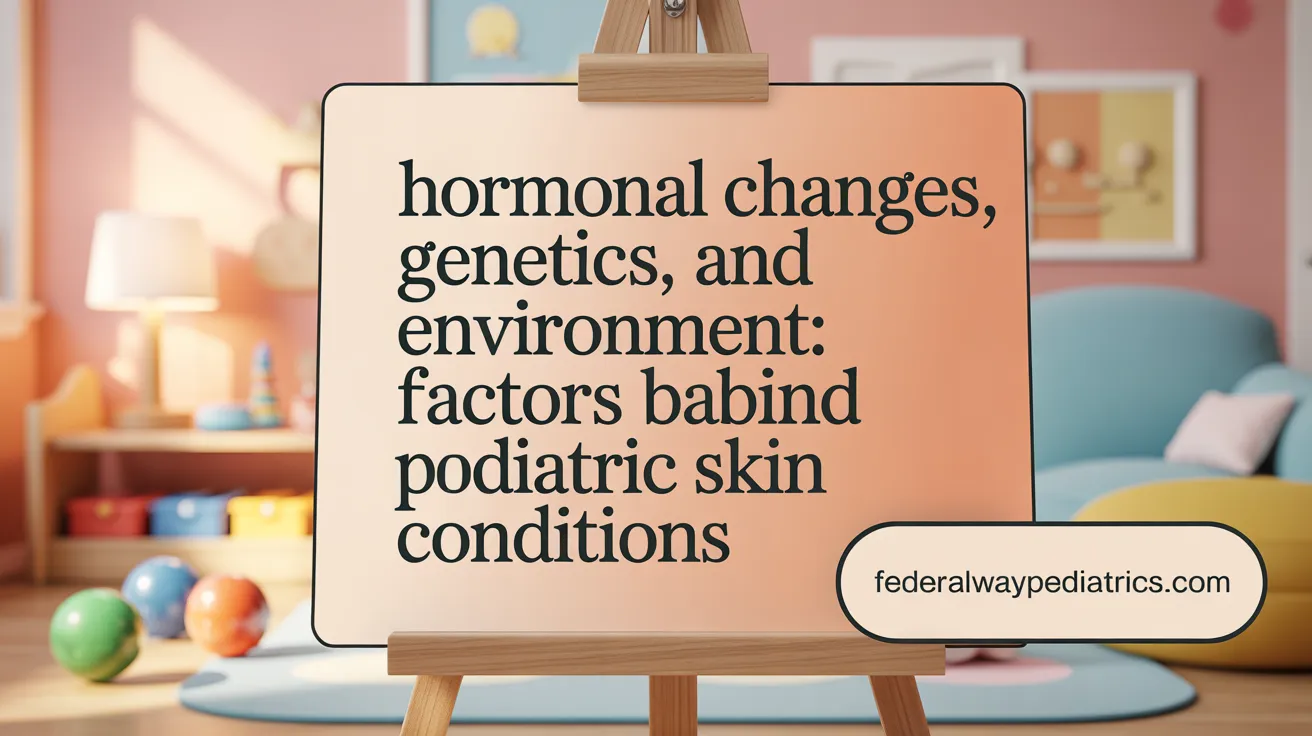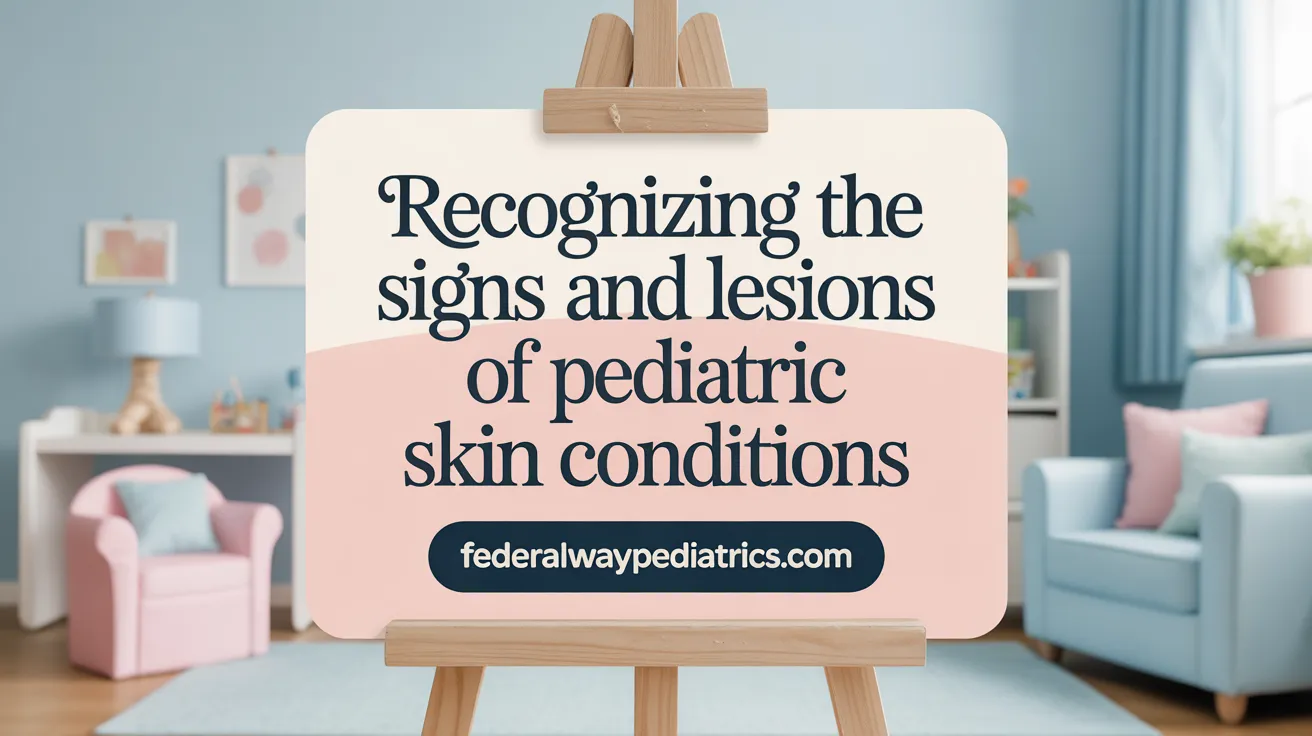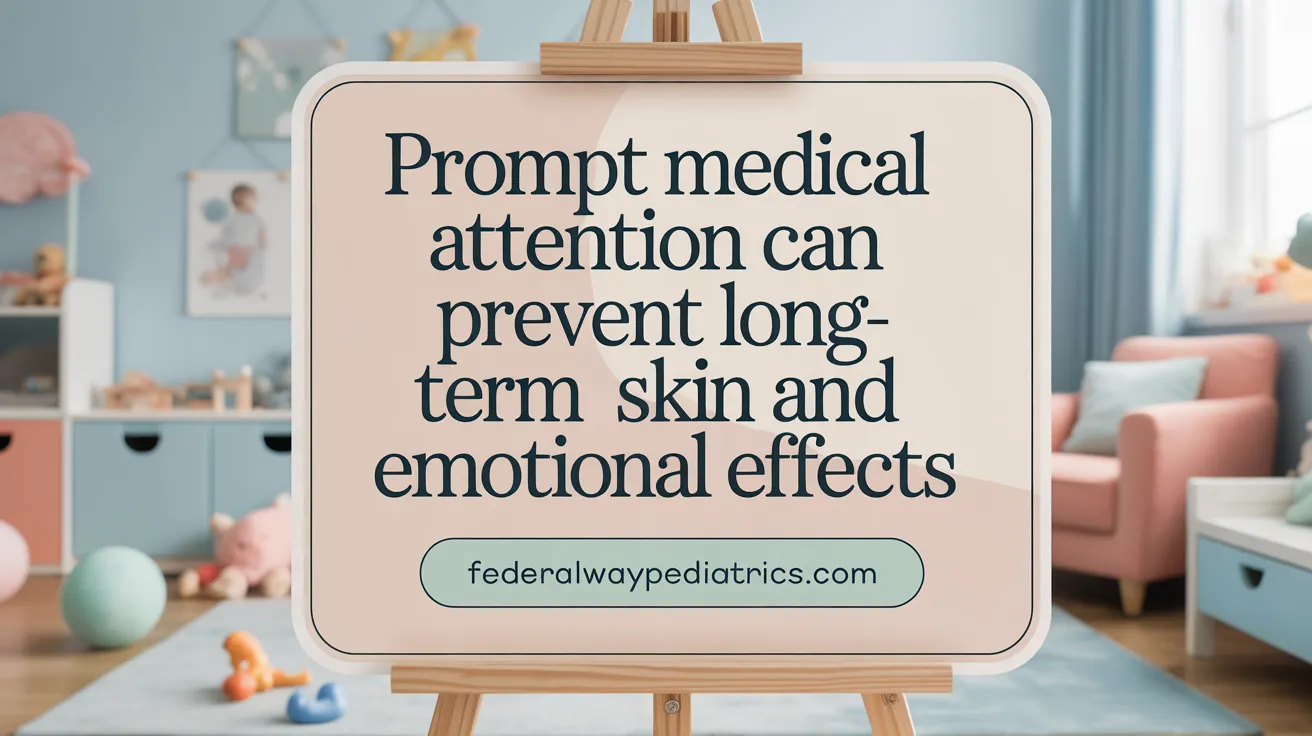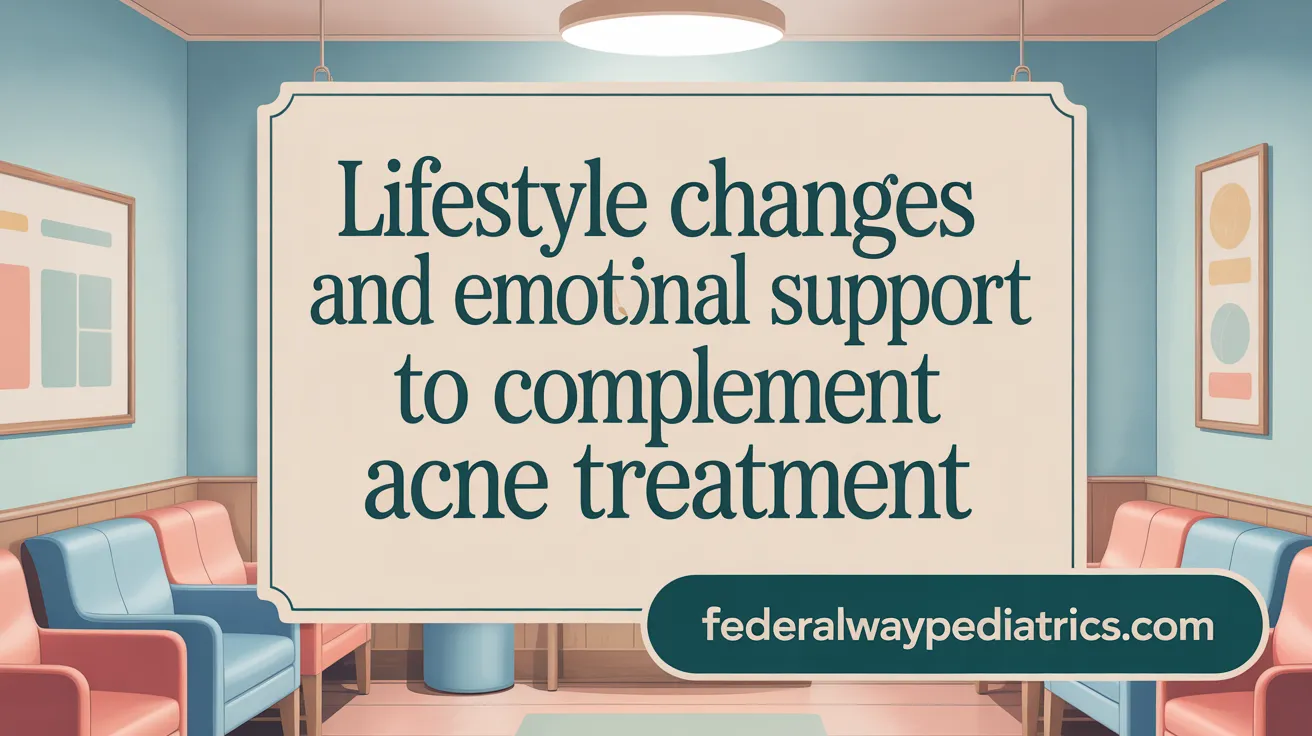Introduction to Childhood Acne and Its Deeper Implications
Acne is widely recognized as a common skin ailment, predominantly affecting teenagers during puberty. However, when acne appears in children, especially those as young as 6 to 8 years old, it may signify more than just a typical skin condition. Beyond the visible pimples and blemishes, pediatric acne can have serious physical and emotional consequences. This article explores the underlying causes, stages, and severity of acne in children, highlights its impact on emotional well-being and social development, and offers guidance on when to seek professional medical care and the best treatment options available.
Understanding the Causes and Early Onset of Acne in Children

What causes children as young as 6 to 8 years old to develop pimples or acne?
Children as young as 6 to 8 years old can develop pimples or acne mainly due to hormonal changes. During this age, increases in androgens—male sex hormones that are also present in small amounts in girls—stimulate the skin's oil glands to produce more sebum, leading to clogged pores.
Genetics significantly influence whether a child develops acne early. If there is a family history of acne, the child is more likely to experience more severe or persistent symptoms. This hereditary component affects how much oil the skin produces and how the immune system responds to bacterial growth.
Environmental factors also contribute and can worsen early acne. Pollution, high humidity, and exposure to irritating substances from cosmetic or skin-care products can promote skin inflammation. These external factors create an environment conducive to bacterial growth within clogged pores.
Sometimes, medication use or specific health conditions are involved in early childhood acne. For example, certain drugs containing hormones or steroid medications can trigger breakouts.
In newborns, a common form called neonatal acne is caused by maternal hormones crossing the placenta and stimulating the sebaceous glands. This form of acne usually clears on its own within a few weeks without leaving scars.
Overall, early-onset acne in children results from a combination of hormonal activity, genetic predisposition, and external environmental influences, underscoring the importance of tailored skincare and medical guidance for affected children.
Stages and Severity of Acne in Children

What are the stages of acne and how do they differ in severity?
Acne progresses through several stages, starting from mild forms to more severe, inflamed types. Mild acne mainly involves non-inflammatory lesions such as whiteheads and blackheads. As it advances, it can become inflamed, characterized by red pimples and pustules. In severe cases, the condition involves large, painful bumps called nodules and cysts, often accompanied by swelling and redness.
Classification of acne stages from mild to severe
| Stage | Description | Types of Lesions | Associated Symptoms |
|---|---|---|---|
| Mild | Minor clogging of pores | Whiteheads, blackheads | No significant pain or swelling |
| Moderate | Increased inflammation | Papules, pustules | Redness, tenderness |
| Severe | Deep inflammation with risk of scarring | Nodules, cysts | Significant pain, swelling, potential for scars |
Types of acne lesions: whiteheads, blackheads, pimples, nodules, cysts
- Whiteheads: Closed comedones, small flesh-colored bumps.
- Blackheads: Open comedones with black or dark brown tops.
- Pimples: Inflamed red bumps, often with pus.
- Nodules: Large, solid, painful bumps beneath the skin surface.
- Cysts: Deep, painful, pus-filled lesions that can cause scars.
Physical symptoms and complications associated with severe acne
Severe acne can lead to persistent skin redness, swelling, and tenderness. It often causes emotional distress such as low self-esteem, anxiety, and depression. If left untreated, it increases the risk of permanent scarring and skin infections. Recognizing these signs early and seeking suitable treatment helps to prevent long-term skin damage and emotional difficulties.
When to Seek Medical Help: Guidance for Parents and Guardians

When should parents seek professional medical help for a child's acne?
Parents should monitor their child's acne closely. If over-the-counter treatments such as benzoyl peroxide or salicylic acid do not show improvements after about one to two months, it is time to consult a healthcare professional.
Severe acne that involves cysts, painful nodules, or rapidly worsening symptoms warrants early medical attention. Emotional effects like distress, low self-esteem, or signs of depression in the child are important reasons to seek help.
Parents should also seek medical advice if the acne is accompanied by signs of underlying health issues, such as symptoms of early or late puberty, hormonal irregularities, or side effects from medications. Children under 9 years old with acne or those with sudden, unusual patterns should be evaluated to rule out hormonal or glandular problems.
Prompt consultation is recommended if there are indications of infection, scarring, or if the acne persists beyond several months without improvement. Seeing a pediatrician or dermatologist early can prevent complications. Overall, any persistent, severe, or troubling acne warrants professional medical help for appropriate diagnosis and treatment.
Safe and Effective Treatment Options for Acne in Children and Preteens
What treatment options are safe and effective for managing acne in children and preteens?
Managing acne in children and preteens requires a careful approach tailored to the severity of the condition. For mild cases, over-the-counter topical treatments are usually effective and safe. Products containing benzoyl peroxide are popular because they help clear pores by killing bacteria and reducing inflammation. It is recommended to apply these medications once daily at bedtime, in a pea-sized amount. Consistent use over 6 to 8 weeks is necessary to see improvement.
Topical retinoids such as adapalene, tretinoin, or trifarotene are also commonly prescribed. These help normalize skin cell turnover, preventing pore clogging, and are suitable for children with mild to moderate acne. They should be used as directed by a healthcare provider to minimize irritation.
For more moderate to severe acne, prescription medications might be necessary. Topical antibiotics like clindamycin or erythromycin can be added to reduce bacterial growth and inflammation. Oral antibiotics such as doxycycline or minocycline are options for children over 8 years old with significant cases, but these require careful medical supervision to avoid side effects.
In pubertal girls with persistent or hormonal-related acne, hormonal therapy like certain birth control pills may be considered to regulate hormone levels.
For severe, resistant, or cystic acne, isotretinoin, a powerful oral medication, may be used. It offers a chance for long-term remission but requires close monitoring by a dermatologist due to potential side effects like dry skin, elevated blood lipids, and, rarely, mood changes.
Throughout all treatments, psychosocial impacts should be considered. Supporting mental health, encouraging adherence, and promoting sun protection practices are vital components of comprehensive care. Lifestyle modifications, including a balanced diet and avoiding irritating skin products, can also support treatment outcomes.
Proper medical guidance is essential for selecting the safest—and most effective—approach to treat acne in young patients, aiming to prevent long-term skin damage and emotional effects.
Emotional and Social Impacts of Acne on Children and Adolescents
How does acne impact the emotional well-being and social development of children and adolescents?
Acne can dramatically influence the emotional health and social growth of young people. The presence of acne, especially when severe or persistent, often leads to decreased self-esteem and feelings of embarrassment. Many teens report feeling shy, lonely, or less confident because of their skin, which can make social interactions more challenging.
The effects are even more significant in certain groups, such as girls, racial or ethnic minorities, and gender or sexual minority youth. These individuals may experience heightened emotional distress and social discomfort related to their appearance.
In addition to self-esteem issues, acne can foster social withdrawal, leading adolescents to avoid social activities, friendships, or dating because they feel self-conscious or ashamed.
The psychological toll may include increased risks for mental health conditions like anxiety, depression, and in some cases, suicidal thoughts. This is often correlated with the severity of acne and the presence of physical scars, which can serve as constant reminders of their skin condition.
Because of these profound emotional and social consequences, it is crucial that treatment approaches go beyond simple medications. Providing psychological support and counseling can help mitigate feelings of distress, support healthy social development, and improve overall quality of life for affected children and teens.
Efforts to manage acne effectively should address both physical symptoms and emotional well-being, promoting healthier self-image and social confidence.
Preventive Strategies and Holistic Care for Pediatric Acne

Daily skin care routines tailored for children
Maintaining a gentle skincare routine is essential for children with acne. Washing the face twice daily using a mild, non-alkaline cleanser helps remove excess oil, dirt, and dead skin cells. It's important to avoid harsh scrubbing, which can irritate the skin and worsen acne. Using a non-comedogenic moisturizer after cleansing can improve skin hydration without clogging pores.
Avoidance of common triggers such as harsh scrubbing and comedogenic products
Children should avoid aggressive skin treatments like scrubbing or picking at pimples, as these actions can lead to inflammation and scars. Additionally, choosing skincare and hair products labeled as non-comedogenic reduces the risk of pore blockages. Oil-based cosmetics should be replaced with water-based or non-comedogenic alternatives to prevent worsening of acne.
Lifestyle factors including diet, stress management, and sun protection
While diet's direct impact on acne is still debated, a balanced diet rich in fruits, vegetables, and whole grains can support overall skin health. Limiting high sugar and processed foods may help manage breakouts. Stress can trigger increased oil production; thus, stress management techniques such as regular physical activity, adequate sleep, and relaxation exercises are beneficial. Protecting skin from excessive sun exposure with broad-spectrum sunscreen helps prevent post-inflammatory discoloration and skin damage.
Integrating emotional care with physical treatment
Acne can significantly affect a child's self-esteem and emotional well-being. Providing emotional support, encouraging open communication, and fostering a positive self-image are crucial. When necessary, counseling or support groups can help children cope with the psychological impacts of acne. Combining proper skincare and medical treatment with emotional care creates a holistic approach to managing pediatric acne effectively.
Conclusion: Addressing Acne Beyond Skin Health in Kids
Acne in children and adolescents is more than a superficial skin issue; it often signals underlying hormonal changes and can deeply affect emotional and social well-being. Recognizing the causes, stages, and potential severity of pediatric acne is essential for timely intervention. Parents and caregivers should be vigilant for signs that warrant professional medical attention, as early and appropriate treatment can prevent long-lasting physical scarring and psychological distress. Treatment extends beyond topical care, encompassing consistent skincare routines, medical therapies tailored to severity, and emotional support to foster healthy self-esteem and social development. Ultimately, a comprehensive approach ensures that when acne becomes more than skin deep, children receive the care necessary to thrive both physically and mentally.
References
- Acne in Children | Johns Hopkins Medicine
- EFFECTS OF ACNE: MORE THAN SKIN DEEP
- Teen Acne: How to Treat & Prevent This Common Skin Condition
- Acne: more than skin deep - PubMed
- Acne in Children - University of Rochester Medical Center
- Acne (for Teens) | Nemours KidsHealth
- Acne and teen skin health - The Royal Children's Hospital
- Acne: Causes and Treatment - Nationwide Children's Hospital
- Acne Myths - Children's Minnesota
